
The Millennium Development Goals (MDGs) were eight international development goals for the year 2015 that had been established following the Millennium Summit of the United Nations in 2000, following the adoption of the United Nations Millennium Declaration. These were based on the OECD DAC International Development Goals agreed by Development Ministers in the "Shaping the 21st Century Strategy". The Sustainable Development Goals (SDGs) succeeded the MDGs in 2016.
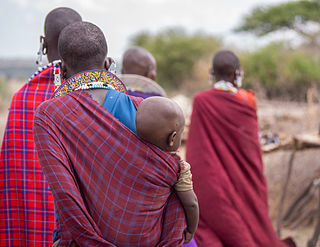
Although the roles, livelihoods, and safety of women in Tanzania have improved significantly since the 20th century, the nation remains a strongly patriarchal society in which women face high rates of gendered violence and barriers to full legal rights and education.

The World Bank is an international financial institution that provides loans and grants to the governments of low- and middle-income countries for the purpose of pursuing capital projects. The World Bank is the collective name for the International Bank for Reconstruction and Development (IBRD), International Finance Corporation and International Development Association (IDA), three of five international organizations owned by the World Bank Group. It was established along with the International Monetary Fund at the 1944 Bretton Woods Conference. After a slow start, its first loan was to France in 1947. In the 1970s, it focused on loans to developing world countries, shifting away from that mission in the 1980s. For the last 30 years, it has included NGOs and environmental groups in its loan portfolio. Its loan strategy is influenced by the Millennium Development Goals as well as environmental and social safeguards.

Saktiandi bin Supaat is a Singaporean politician and economist. A member of the governing People's Action Party (PAP), he is the Member of Parliament (MP) representing the Toa Payoh East ward of Bishan-Toa Payoh Group Representation Constituency (GRC) since 2015. Saktiandi is also concurrently Executive Vice President at Maybank and the Vice-Chairman of the Bishan-Toa Payoh Town Council.

China originally joined the World Bank Group(WBG) on December 27, 1945. However, after the Chinese Civil War, the World Bank recognized the Republic of China as its member, until the relationship ended in 1980, when the membership was replaced by the People's Republic of China. The People's Republic of China (PRC) did not become involved with the World Bank group until 1980, when it first joined the World Bank in April due to the market reforms known as reform and opening-up. Prior to the economic reform and its relation with the World Bank, according to CRS, "China maintained policies that kept the economy very poor, stagnant, centrally controlled, vastly inefficient, and relatively isolated from the global economy" Since its entry into the World Bank, China has transformed into a market-based economy and has experienced rapid economic and social development. Currently, although China has become the world's second largest economy with 1.4 billion population, it still has a close relationship with the World Bank in areas such as poverty, environmental protection and new challenges from the reform.
The World Bank Group country partnership framework aims to support Haiti's efforts to reduce poverty and provide economic opportunities for all Haitians. The framework aims to strengthen institutions, government capacity, and public financial management as aid and concessional financing rapidly decline.

Vietnam joined the World Bank Group (WBG) on 21 September 1956. Before the mid-1980s, Vietnam was one of the world's least developed countries. A series of economic and political reforms launched in 1986, known as Đổi Mới, caused Vietnam to experience rapid economic growth and development, becoming a lower middle-income country. The World Bank (WB) has maintained a development partnership with Vietnam since 1993. As of 25 March 2019, it has committed a total of US$24 billion in loans, credits, and grants to Vietnam through 165 operations and projects, 44 of which are active as of 2019 and comprise US$9 billion. With an estimated extreme poverty rate below 3% and a GDP growth rate of 7.1% in 2018, Vietnam's economy continues to show fundamental strength and is supported by robust domestic demand and export-oriented manufacturing.
The relationship between Ethiopia and the World Bank was formalized on December 27, 1945.
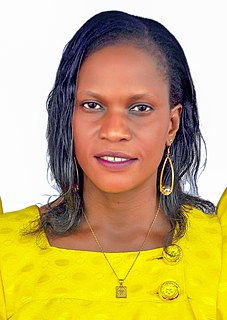
Jesca Ababiku is a Ugandan educator and politician. She is currently a member of the Tenth Parliament of Uganda, representing the people of Adjumani district in one of the parliamentary seats reserved for women. She is a member of the National Resistance Movement (NRM), the ruling political party in Uganda under the chairmanship of Yoweri Kaguta Museveni Tibuhaburwa, the current president of the Republic of Uganda.

The World Bank Group, composed of five institutions, works together with the Panamanian government to reduce poverty and increase prosperity. Panama first became a member of the World Bank Group on March 14, 1946. In the past decade, Panama's annual growth has increased by 7.2% in the span of 12 years, making it one of the fastest growing economies in the world. In 2019, Panama was ranked the second fastest growing economy in Latin America by the World Bank. As of 2019, Panama has $435.59 million US dollars being distributed amongst seven projects, all geared toward their overall goal of poverty reduction and indigenous inclusion. Continuing with their efforts to reduce extreme poverty, the World Bank along with efforts of the Panamanian government has reduced poverty from 39.9% to 26.2% while extreme poverty has been reduced by an estimated 15.6% to 11.3% from 2014 to 2019. As of late 2019, there is an estimated $213.26 million US dollars of undisbursed loans.

South Korea first joined the World Bank Group as a member in 1955. Over the years, South Korea manages to develop its economy in a successful and positive manner. The country now is a financial contributor to the World Bank to help other, rather than an aid recipient in the old days. Under the help and cooperation with the World Bank, South Korea became a rapid growth country in economy begin in the 1970s, and it now became a large shareholder of the institution to help out other developing countries.
Japan joined the World Bank Group in August 1952. Loans that were taken out by Japan focused on improving infrastructure, having electrical power generation, improving water, establishing basic industry development and improving transportation. Japan now is the second-largest creditor to the World Bank, and in 1970 established an office in Tokyo.

The World Bank has provided financial support for infrastructure and development programs in Kenya dating back to May 1960. The first Kenyan project that was financed by the World Bank was the African Agriculture Project, the World Bank issued the then British Colony with $5.6 million dollars to invest in infrastructure that was vital to developing Kenya's agricultural sector.

Mali joined the World Bank Group in 1963 after they gained their independence from France in 1960. They are a low-income country with 41.3% of their population living under the poverty line in 2019. Additionally, Mali is a landlocked country whose economy is vulnerable to changes in climate. Thus, Mali has relationships with the International Bank for Reconstruction and Development (IBRD), International Development Association (IDA), International Finance Corporations (IFC), and the Multilateral Investment Guarantee Agency (MIGA). In 2019, the IBRD and IDA committed to lending 500 million US dollars to projects in Mali, a large jump from 2018, where only US$178 million was lent. The bank group is currently involved in 30 projects in the region.These projects focused on areas such as mining, cotton, climate change, good governance, and health. Since 2013, the World Bank Group has worked alongside their UN mission counterpart, MINUSMA to create stability and growth in the region. The current World Bank Country Director for Mali is Soukeyna Kane.
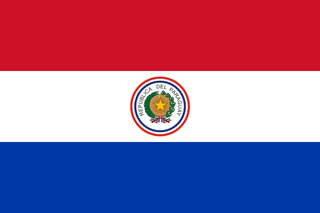
Paraguay joined the World Bank Group on 28 December 1945. In 1951, the World Bank approved an Agriculture project in Paraguay marking the beginning of a partnership that persists to this day and has given rise to 76 development projects of which 6 are currently active. Paraguay has received $2,718,521,989 in total commitments from the World Bank. Paraguay saw an annual growth rate of 4.5% per year until 2016 making it one of the fastest growing economies among regional neighbors. The implementation of steady and dependable macroeconomic policies have fostered a friendly environment for investors that largely contribute to Paraguay's consistent economic growth, however much of Paraguay's economic development has resulted from the replacement of forests with agriculture operations. As forests become increasingly scarce and climate change disrupts agricultural output, Paraguay will be forced to adapt its economy and society to meet a number of targets including strengthening the rule of law, achieving sustainability in regards to its natural resources, investing in human capital, and improving government services. To achieve these goals, Paraguay is collaborating with the World Bank including strategic partnerships with IBRD, and IFC. Jordan Schwartz is the World Bank director for Paraguay and Matilde Bordón is the World Bank representative.
Ireland joined the World Bank on August 8, 1957, and has continued to be a member since then. A majority of the money loaned to Ireland from the World Bank was put towards infrastructure projects, such as power and education. Ireland was able to pay back these loans in the predetermined time frames with little to no issue.

The Maaji refugee settlements are three refugee camps located in Adjumani District in the Northern Region of Uganda, established in 1997. In June 2018, there were 41,764 registered refugees, accounting for 10% of the district's total population. It has primarily admitted refugees from the Second Sudanese Civil War and the ongoing South Sudanese Civil War. The settlements have been attacked several times by the Lord's Resistance Army, along with other camps in the region such as the Baratuku refugee settlement.
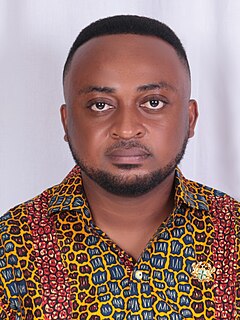
Vincent Ekow Assafuah is a Ghanaian politician who is a member of the New Patriotic Party (NPP). He was the Public Relations Officer (PRO) for the Ministry of Education. He is the member of Parliament for the Old-Tafo Constituency in the Ashanti Region.
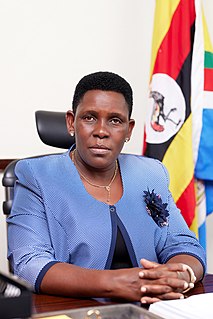
Grace Mary Mugasa is a Ugandan politician who currently serves as the State Minister for Public Service. She was appointed on June 8, 2021, by the President Yoweri Kaguta Museveni, assuming office on 21 June 2021. Grace Mary took office from David Karubanga, the former State Minister and Member of Parliament representing Kigorobya. Prior to her appointment, she was the first female Mayor of Hoima Municipality and saw it through its transition to City status in July 2020.














